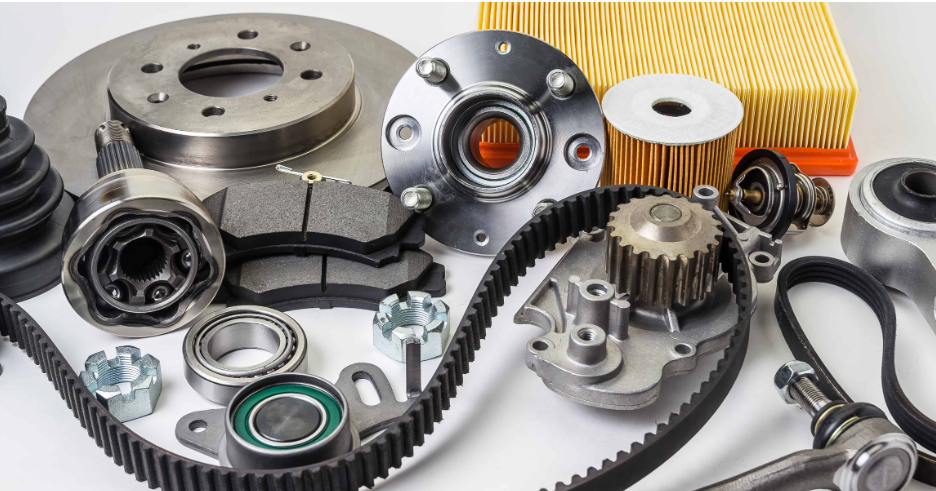Why Quality Brake Lining Matters for Truck Safety
Preventing Catastrophic Brake Failure
Good quality brake linings really matter when it comes to stopping trucks safely and avoiding total brake failures. According to industry reports, around one out of four truck crashes happens because something goes wrong with the brakes. That's why keeping the braking system in top shape with solid parts isn't just important—it's essential for everyone on the road. When drivers install those premium brake pads that can handle extreme heat and heavy cargo weights without losing grip, they're basically cutting down on accident risks. The best brake linings last longer too, so they don't need replacing as often. Mechanics will tell anyone who listens that these durable components perform reliably whether it's freezing cold or scorching hot outside, making them worth every penny for fleet operators concerned about both safety and maintenance costs.
Compatibility with Advanced Safety Systems
Today's trucks come equipped with sophisticated safety tech such as ABS and EBS braking systems, and these need the right kind of brake parts to work properly. Good quality brake linings are specifically designed to mesh well with modern braking technology, so they integrate reliably and actually make driving safer. When mechanics install the wrong type of linings though, problems happen fast. The whole braking system might start acting up, which means drivers face higher risk on the road. That's why spending money on proper brake linings isn't just about protecting the vehicle itself, but getting the most out of all those expensive safety features built into today's commercial trucks.
Key Components of Truck Brake Systems
Brake Pads vs. Brake Shoes: Understanding the Difference
Knowing how brake pads and brake shoes work matters when picking out replacement parts for truck brakes. Brake pads sit inside disc brake systems where they actually touch the spinning disc to slow things down or bring the truck to a halt. Brake shoes are different though. They live in drum brake setups and press against the inside of the drum to create friction for stopping power. Getting this difference straight affects both how often parts need replacing and what kind of money gets spent on maintenance since brake pads generally wear out faster than shoes do. The type of braking system makes a real difference too, particularly when hauling heavy loads versus lighter ones. Smart decisions about which components go into a truck's braking system keep the whole thing working properly and most importantly, keeps drivers safe while traveling. Taking time to understand exactly what each part does isn't just good practice, it actually extends how long those parts last before needing replacement.
Rotors and Drums: Heat Dissipation Essentials
When it comes to keeping things cool during braking operations, rotors and drums really matter. What these parts are made of and how they're built determines their ability to handle all that heat buildup. Let the metal get too hot and something called brake fade happens where the vehicle just doesn't stop as effectively anymore. That's why good quality parts aren't optional but necessary for anyone concerned about actual performance on the road. Checking those rotor surfaces and drum conditions regularly is pretty much mandatory if we want our trucks to keep stopping properly. Most mechanics will tell us that looking for warps or excessive wear during routine maintenance makes sense because even small problems can turn into big safety issues down the road. And speaking from experience, investing in better materials upfront pays off in the long run since it helps manage heat better, keeps those expensive brake jobs at bay longer, and definitely makes a difference when hauling heavy cargo at highway speeds.
Detecting Wear in Brake Systems
How to Check Brake Pad Wear
Checking brake pads on a regular basis keeps trucks safe and stops those dreaded brake failures from happening. When doing a quick visual inspection, mechanics should measure how thick the pads still are and watch out for any damage like cracks or places where the material wears down unevenly. These days, many newer brake pads actually have built-in warning systems too. They'll start making noises - either a buzz or a screech - when it's time to replace them, giving drivers an early heads up about needed maintenance work. Even with these warnings though, most experts suggest grabbing a caliper tool and checking pad thickness manually around every 10 thousand miles driven. Getting this done before pads reach dangerously low levels makes all the difference between smooth driving and sudden emergency stops that nobody wants to experience on busy highways.
Signs of Brake Fluid Degradation
The brake fluid in hydraulic systems is super important for proper functioning, but it tends to break down over time because it absorbs moisture from the air and picks up all sorts of contaminants. When this happens, there are telltale signs that something's wrong: the fluid might turn dark or brownish, the level could drop unexpectedly, and pressing on the brake pedal feels softer than normal. Truck drivers should check their brake fluid regularly, maybe every few months at least. Brake fluid test strips work great for quick assessments of what shape the fluid is in. Just dip them into the reservoir and wait a minute or so. These simple tools let fleet managers catch problems early before they become big headaches down the road. Most garages stock these strips now since they're pretty straightforward to use and save money on unnecessary replacements while keeping those heavy rigs stopping safely on long hauls across country.
Selecting High-Performance Brake Linings
Selecting the proper brake lining material remains a critical decision for commercial vehicle operators. Ceramic and semi-metallic options each bring unique benefits to the table when it comes to stopping power and durability. Truck drivers often find themselves weighing these two choices depending on what kind of performance they need from their brakes. Ceramic materials tend to operate quietly and produce much less dust than other types, which keeps wheel areas looking cleaner over time without all that black residue buildup. Semi-metallic alternatives handle extreme temperatures better though, with superior friction characteristics that hold up under heavy braking loads. For someone hauling freight across mountainous regions or carrying full loads regularly, this difference matters quite a bit. Real world experience shows that matching brake material to actual operating conditions makes all the difference in getting value from those expensive components.
When looking to buy brake linings, knowing how dynamometer testing works makes all the difference. These tests basically recreate what happens when brakes are actually used on roads, giving us numbers that tell us how well different linings perform under pressure. Truck drivers and fleet managers can look at these test results to pick out linings that work for their particular needs while still meeting those important safety requirements. Getting up to speed on what these tests measure helps everyone stay within legal boundaries, sure, but there's another benefit too better brakes mean fewer accidents on highways and back roads alike. Most mechanics will tell you that spending time understanding these standards pays off in both safety and money saved long term.
Ceramic vs. Semi-Metallic Compounds
-
Ceramic Brake Linings:
- Offer quieter operation
- Generate less dust
- Suitable for everyday driving conditions
-
Semi-Metallic Brake Linings:
- Provide superior heat resistance
- Offer better friction handling
- Ideal for high-temperature applications
-
Considerations for Selection:
- Type of terrain and load size
- Specific driving conditions
- Performance longevity
Understanding Dynamometer Testing
-
Purpose of Dynamometer Testing:
- Simulates real-world braking
- Evaluates lining performance
-
Benefits of Testing:
- Informs purchasing decisions
- Assists in meeting performance standards
-
Importance of Familiarity with Standards:
- Ensures compliance with safety regulations
- Improves overall braking efficacy
For those looking to delve deeper into understanding brake linings and their performance characteristics, there are comprehensive resources available to assist in making the best-informed decisions.







